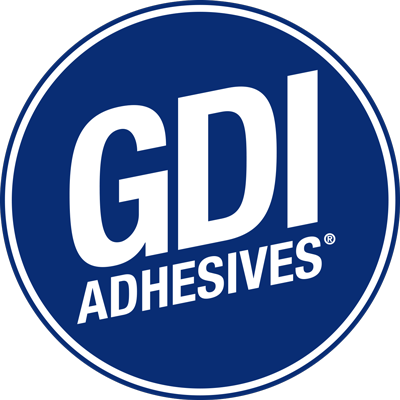Hot melt adhesives are solid at room temperature, requiring heat (electricity) for dispensing, transforming the adhesive from a solid state to a liquid state to be able to apply the adhesive in a manufacturing environment.
Water-based adhesives are a liquid adhesive that can be directly applied to substrates (don’t require electricity). They are produced from taking synthetic or natural polymers and dispersing (aka emulsifying) them in water. Water-based adhesives cure through evaporation of this water, leaving behind a solid adhesive film.
Typically, hot melt adhesives are 100% solid and water-based adhesives are 30-70% solid.
Which is better, water-based or hotmelt? Eye of the manufacturing beholder and application
General comments
In terms of environmental impact, water-based adhesives beat out hot melts for winning the award for being the most environmentally friendly adhesive; non-toxic and low VOC’s (volatile organic compounds).
In terms of speed and efficiency, however, hot melts win the award for manufacturing efficiency. Hot melts quickly demonstrate their advantages when compared to water-based adhesives with instant hot fiber-tear tack capabilities, essentially little to no wait time necessary.
Water-based advantages
- Environmentally friendly: water-based adhesives are non-toxic, emit low VOC levels, and are generally the environmental adhesive choice.
- Easy to clean up: In a liquid state, often easy to drain from any substrate with water making them a conveniently workable clean up until dry.
Safety: water-based adhesives don’t emit harmful fumes or solvents, making them safer to use and better for worker health.
- Material bonding: water-based adhesives are ideal for bonding porous materials like paper, cardboard and wood. They penetrate these porous substrates well while leaving strong bonds.
- Solid content: water-based adhesives typically possess a high solid content with 30%-70% solids in the typical range., meaning they can be used to achieve strong bonds with less adhesive.
- Low cost: There is an argument that both hot melts and water-based adhesives can be more cost effective depending on the specific adhesive used in the application. Water-based adhesives are low cost in terms of wet adhesive per lb cost (30%-70% water), making them more cost-effective at times for manufacturers for the specific adhesive themselves, however, when weighing freight factor into play, water-based adhesives can be expensive shipping across long-distances.
Hot melt advantages
- Fast-curing: Hot melt adhesives cure quickly. Increasing production control, speed and efficiency.
- Versatility: hot melt adhesives can be used on a variety of substrates; plastics, wood, metals, paper, etc.
- Environmentally friendly: no solvent emissions. Hot melt adhesives do not emit harmful fumes, making them operator-friendly, cost friendly with insurance, less quality & safety concerns.
- Strong bond: ability to withstand a wide range of temperatures, pressures and external stressors.
- Ease of use: majority instant bonding and easy to apply makes them a preferred manufacturing choice.
- Cost-effective: hot melt adhesives are generally more cost-effective than other adhesives. Add simplicity of chemistry and efficiency advantages as an ideal solution in an over-complicated production world.
“We just had a customer get rid of all the solvents in their factory because the EPA came in and mandated it for the health of their workers. We went in and supplied them a hot melt spray system that does a more efficient job while also producing zero VOCs in the air, adding major value to the customer”, adds Hunt.
